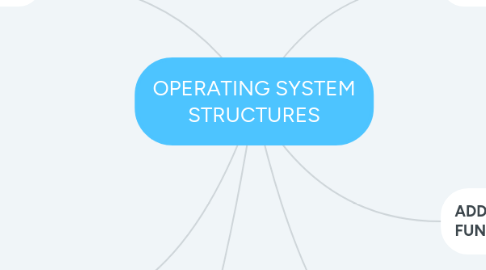OPERATING SYSTEM STRUCTURES
by WEE YI WEN


1. SYSTEM CALL
1.1. provide the interface between a running program and the OS
1.2. three general method to pass parameters
1.2.1. pass the parameters in registers
1.2.2. parameter store in block,or table, in memory,and address of block
1.2.3. parameter place and pushed
1.3. TYPE OF SYSTEM CALL
1.3.1. PROCESS CONTROL
1.3.2. FILE MANAGEMENT
1.3.3. DEVICE MANAGEMENT
1.3.4. INFORMATION MAINTENANCE
1.3.5. COMMUNICATIONS
1.3.5.1. MESSAGE PASSING
1.3.5.2. SHARED MEMORY
1.3.6. PROTECTION
2. LAYERED APPROACH
2.1. OS is divided into a number of layers,each built on top of lower layers. The bottom layer (layer 0), is the hardware; the highest (layer N) is the user interface
2.2. ADVANTAGE
2.2.1. simplicity of construction and debugging
2.3. DISADVANTAGE
2.3.1. the careful definition and interaction of the layers
2.3.2. less efficient
3. MICROKERNEL
3.1. small operating system call
3.2. contain only essential core operating system functions
3.3. BENEFIT
3.3.1. EXTENSIBILITY
3.3.2. FLEXIBILITY
3.3.3. RELIABILITY
3.3.4. PORTABILITY
4. OPERATING SYSTEM SERVICE
4.1. USER INTERFACE
4.2. PROGRAM EXECUTION
4.3. I/O OPERATION
4.4. FILE SYSTEM MANIPULATION
4.5. COMMUNICATION
4.6. ERROR DETECTION
5. ADDITION OPERATING SYSTEM FUNCTION
5.1. RESOURCE ALLOCATION
5.2. ACCOUNTING
5.3. PROTECTION AND SECURITY
6. OPERATING SYSTEM DESIGN
6.1. GOALS
6.1.1. USER GOALS-convenient to use
6.1.2. SYSTEM GOALS-efficient

